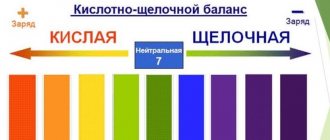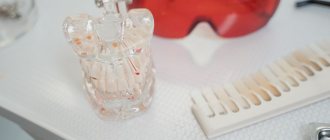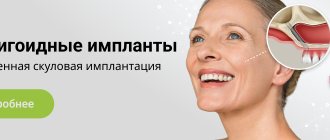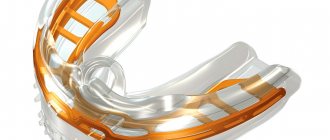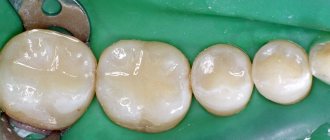01/18/2022
134 196
11 minutes
Co-author, editor and medical expert – Maksimov Alexander Alekseevich.
Hydrogen peroxide was discovered in 1818 by L.Zh.Thenar. Chemical designation H2O2. The substance itself is an almost colorless (pale blue) viscous substance. Hydrogen peroxide without impurities is an unstable substance; it has the ability to decompose to water and oxygen, releasing a large amount of heat. Unlimitedly soluble in water, alcohols and ethers. There is a 31% solution on sale called “Perhydrol”. Due to its oxidizing properties, hydrogen peroxide acts as an antiseptic. For medical use, a 3% H2O22 solution is used.
When peroxide gets on biological substrates (damaged mucous membranes, microbes), active oxygen is released, which destroys cell membranes, thereby providing an antiseptic effect and cleansing the oropharyngeal mucosa from pathogens and cellular detritus. It also has hemostatic properties1.
Up to contents
How to treat wounds with hydrogen peroxide
First of all, hydrogen peroxide is valued for its therapeutic effect. It is often used to treat wounds. The solution can be applied to small wounds, which will remove dead tissue, prevent the spread of germs and stop bleeding. In this case, peroxide can be used once. With frequent use, you can stop the spread of beneficial bacteria involved in healing wounds.
For infectious acne, the solution can be used to treat the affected areas, which will speed up the healing process.
Is it necessary to dilute?
To disinfect a swimming pool, peroxide should only be used in a diluted state. Concentrations of 60% and above are explosive .
If dirt gets into the container, it will trigger a chain reaction of decomposition into oxygen and water, followed by heating.
The temperature will rise up to 1000°. The water will immediately turn into a gaseous state, which will be 7000 times its previous volume. Therefore, the lower the concentration of the solution, the safer it is to work with it .
If peroxide is not diluted or a high concentration is used, during bathing the undecomposed reagent will enter the mouth, stomach, eyes or nasopharynx. This will lead to disruption of the immune system.
In a child, this can cause exacerbation of chronic diseases, as well as disorders of the gastrointestinal tract. However, if you use a weak solution, it will be useless to fight bacteria. This will also lead to the global development of pathogens.
How to dye your hair with hydrogen peroxide
You can dye your hair with the solution. It is especially good at covering regrown dark roots on bleached hair. It is necessary to blot the roots with the solution and leave for 30 minutes, then rinse well under warm water.
The product is also effective for gradual lightening with oxen. To do this, you will need to take equal amounts of water and hydrogen peroxide and add them to the sprayer. Then you need to spray the solution onto the strands and distribute evenly with a comb. Wait until completely absorbed. If you periodically carry out such manipulations, you will notice how the strands begin to lighten.
Step-by-step instructions for breeding
To disinfect pool water, it is better not to buy a technical solution, since it contains an admixture of salt and metals . This will slow down the decomposition of the peroxide.
The best option would be peroxide, used in medicine with a concentration of 35% to 37%. It is also the safest solution for humans.
Sometimes pool owners use a highly concentrated mixture of 60%. It is recommended to dilute it to 30% or lower. This is necessary for safe work with peroxide and to eliminate the possibility of damage to metal parts of the structure, which will lead to rust in the water.
In what and how?
A regular plastic canister is suitable for diluting a highly concentrated solution. To dilute the concentrated solution, use plain water.
To determine the amount of water for diluting 60% peroxide to 35%, you can use the following formula 1*0.6/0.35 – 1 = 0.71, where:
- 1 – one gram of water;
- 0.6 – peroxide 60%;
- 0.35 – peroxide 35%;
- 0.71 – amount of water for dilution.
This means that 1 liter of perhydrol will require 710 grams of water to make a 35% solution. The solution can only be mixed with drinking water that does not contain chlorine.
Is it possible to put hydrogen peroxide in your ears?
Drops are effective in the presence of an ear infection, as well as in cases of blockage in the ear. But if you have such problems, you should not rely on hydrogen peroxide alone, but you need to inform a specialist about this, otherwise the problem may only worsen.
Earwax is not an infection, but it can cause blockages. In this case, you can use a couple of drops of hydrogen peroxide and olive oil. Instill the resulting solution into the ears. After the procedure, you can rinse your ears a little under warm water.
Some people claim that if you drop 2-3 drops of the solution into your ears, it will help get rid of flu germs and viral diseases.
Advantages and disadvantages of purifying pool water with peroxide
Pros:
- Cheap - unlike most modern cleaning products and special systems, peroxide is inexpensive.
- The liquid has no color and no such strong odor as, for example, the no less common chlorine.
- Peroxide not only purifies the water, but also makes it transparent, removing the unpleasant greenish tint.
- The use of peroxide does not affect the change in PH (acid-base balance) of water.
- Cleaning a pool with hydrogen peroxide does not require the presence of a specialist.
- If the dosage and recommendations for use are followed, the product does not harm human health.
- The result lasts from one to two months.
Minuses:
- Efficiency decreases for water whose temperature exceeds 27-28°C
- . To avoid constant exposure to hydrogen peroxide on the skin (especially sensitive and prone to allergic reactions), alternate cleansing methods.
- Repeated cleaning of the pool with hydrogen peroxide will be required after 1-2 months (depending on the degree of water contamination).
Is it possible to brush your teeth with baking soda and hydrogen peroxide?
Hydrogen peroxide is used to whiten teeth. To do this, you need to rinse your mouth with the product for 20-30 seconds and then spit it out.
You can make toothpaste using hydrogen peroxide at home. To do this, you need to mix it with baking soda.
Regularly performing such procedures will make your teeth whiter. In addition, toothpaste based on soda and peroxide helps combat bad breath.
Frequency of application of disinfection solution
To determine how often to disinfect your pool, you should pay attention to the weather .
For example, if there are many sunny days in a month and the weather is hot, in this case the treatment is carried out 2 times a month. At a temperature of 25C° and a moderate number of sunny days, the frequency can be reduced to 1 time.
It is also worth considering the contamination of the pool. There is no need to wait until it becomes too cloudy.
To determine the degree of contamination, you can take water into a transparent glass container and compare it with clean drinking water . If there is a yellowish tint and an unpleasant odor, it is time to disinfect.
How to remove stains with a solution
Hydrogen peroxide is actively used by housewives in everyday life. It helps remove any stains from countertops, tiles and other surfaces in the house. This will not only clean the house, but will also prevent the appearance and proliferation of harmful microbes.
Peroxide will help get rid of limestone deposits. To do this, you need to spray the solution onto the desired area, leave it for 2-3 hours, and then wash it off with a sponge and soap.
A lot of dirt collects on the tiles and stains appear, which are very difficult to remove over time. Peroxide will remove mold and refresh the appearance of the tiles. To do this, you need to mix the product with flour so that the consistency resembles a paste. Treat the ceramic surface with the resulting solution and leave overnight. Wash the surface in the morning, after which all dirt will disappear.
Consequences of using a highly concentrated composition
As mentioned above, peroxide breaks down into oxygen and water. It is also not expensive and does not have an unpleasant odor.
But, if you do not follow clear recommendations for use as a pool cleaner, perhydrol will provoke the following:
- dry skin;
- at increased concentrations – a painful burn;
- if water gets into the mouth and then the stomach, the person will suffer from irritation of the mucous membrane;
- loss of natural hair color.
However, peroxide cannot be called a strong disinfectant. In order to effectively destroy reproducing microorganisms in water, the concentration must be at least 200-300 grams per 1 m3 . This amount of perhydrol is considered harmful to humans.
Rinse every 5–10 minutes
In the rhythm of the strain: what is known about the “Lambda” variant of coronavirus Genetics have assessed the danger of mutations in the South American version of SARS-CoV-2
Practical experience shows that iodine-based antiseptics are the most effective and work better against bacterial and viral infections, Ilya Gladyshev, an otolaryngologist at the Medsi clinic, explained to Izvestia. At the same time, pathogens practically do not develop resistance against them. However, all iodine-containing antiseptics are highly allergenic. In addition, iodine is contraindicated for diseases of the thyroid gland and there are concerns that iodine, like chlorhexidine, can stain teeth. For these reasons, when prescribing rinses with povidone-iodine, it is necessary to inquire about the patient’s tolerance to this drug, the specialist is sure.
Pharmacology
It is an antiseptic from the group of oxidants with a characteristic hemostatic effect. Has deodorizing and disinfecting effects. The antiseptic properties are due to the fact that when it comes into contact with a damaged area of the skin or mucous membrane, hydrogen peroxide breaks down under the influence of peroxidase and catalase, and oxygen is actively released (including active forms). This process creates an unfavorable environment for the development of microorganisms (especially putrefactive and anaerobic ones). Since the duration of the process is short, the effect is weakly expressed.
It is recommended to use hydrogen peroxide to treat wounds. The instructions for use inform that when peroxide gets on an open wound, the processes of destruction of the formed pus, blood, proteins (proteins) begin and mechanical cleansing of foreign bodies, polluting particles and blood clots occurs due to abundant foaming. The latter appears due to gas bubbles. In addition, foaming actively promotes the formation of blood clots, which leads to stopping bleeding from capillaries and small vessels.
Help your friends find out!
Rinsing the mouths of COVID-19 patients with povidone iodine, hydrogen peroxide or chlorhexidine will reduce infectiousness and ease symptoms of the disease, doctors in Scotland say. Previous experiments with viruses related to SARS-CoV-2 showed that in this radical way it is possible to reduce the content of coronavirus in the patient’s saliva by 99.99%. However, these measurements were taken 15 seconds after the procedure. Only further experiments will make it possible to understand how often you need to rinse your mouth so as not to infect others. The opinions of Russian medical practitioners and theorists surveyed by Izvestia were divided about the effectiveness of this method. They also recalled that iodine and chlorhexidine cause tooth enamel to turn yellow.
Gargling for adults
It is not difficult for adults to use the medicine in the fight against sore throat. As for any other group of patients, a 0.25% solution is used.
An additional effective remedy would be to lubricate the mouth during illness. The wiping solution should be slightly higher in concentration than the rinse solution, so you need to know exactly how much peroxide you need.
15 ml of peroxide is diluted in half a glass of warm water. A cotton swab is soaked in the liquid and the oral cavity is soaked as deeply as possible. It is an effective and more effective way to combat tonsillitis.
Dihydrogen dioxide: features
The foreign name, which can most often be found on packages in stores, sounds like Hydrogen peroxide; the formulations Dioxidane and Dihydrogen dioxide are also common. In Russian, synonyms are used - hydroperite (if we are talking about tablets or capsules) or perhydrol. This substance is easily soluble in water, alcohol, ether and a number of other liquids. The compound has equally oxidizing and reducing properties: oxidizing nitrites and nitrates, releasing iodines and breaking down proteins, reducing manganese, gold and silver salts. This is precisely the reason for the use of hydrogen peroxide for pools with shallow, small-volume tanks. Once in the environment, it quickly decomposes, which ensures its relative safety, and is also stored for a long time without losing its properties. The substance is widely used in industry, agriculture, medicine and in everyday life. For reservoirs it is used as an effective, powerful disinfectant, bleaching, bactericidal agent with instant action.
For weight loss
In order to treat obesity, you need to take the drug orally, but according to a slightly different scheme than that developed by Neumyvakin. On the first day you need to take 1 drop, diluted in 1 tbsp. l. water, 3 times a day, on day 2 - 2 drops 3 times and so bring to 9 drops per 1 dose. Then reduce by 1 drop - from 8 drops 3 times a day, then 7, 6, etc. Having reached 1 drop, take a break for 3 days. Start the second course with 10 drops on the first day, drink for 10 days.
The second way to lose weight with peroxide is to drink 2 drops, diluting them in 200 ml of warm water, 3 times a day. Monitor your condition throughout the course and, if it worsens, gradually reduce the dose. The total duration of treatment is not limited.



